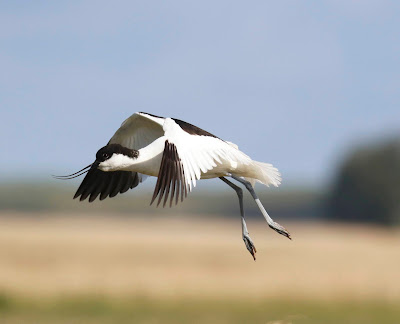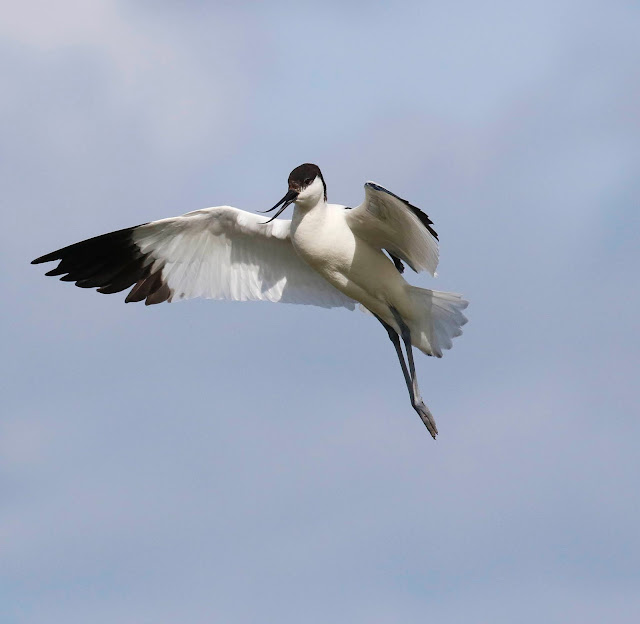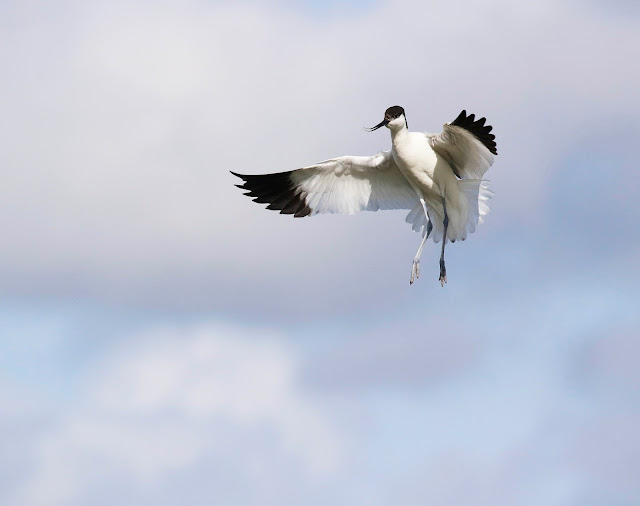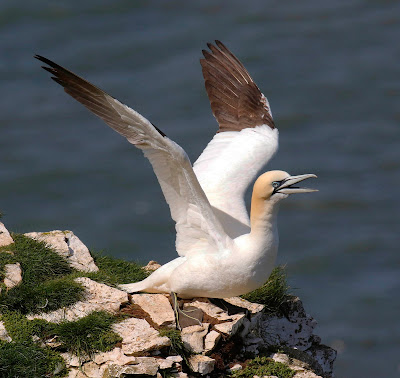A quick coffee and croissant from the store at Burnham Deepdale and we were all set. We left around 7am and the drive took an hour, crossing the flat landscape of Lincolnshire on roads that stretched for miles without deviation, passing through an agri-desert of huge farm fields that used to be fens but now were harbouring whatever crop had been sown in them. I tried to imagine this landscape before it was turned to intensive farming but became too depressed at what had become of it.
We arrived at Frampton fairly early in the morning with very few people around and set about birding.Sadly there were precious few waders or anything else to spark the birding juices and we found ourselves driving to the end of the reserve and parking near to the sea wall.
Mark was getting excited about a Thrush Nightingale that had been found singing at Flamborough Head in North Yorkshire and announced that if there was any more news on it this morning we would be going for it. Fair enough. I was totally in agreement. He was doing the driving and a Thrush Nightingale is a very rare vagrant to Britain. It would be nice to see one, both of us having only ever seen one each and in my case that was in Shetland a long time ago.
While discussing the logistics of getting to Flamborough, we noticed two pairs of Avocets that were guarding their newly hatched young, cute tiny balls of fluff already showing signs of the distinctive upturned bill. The families were feeding on a marshy flash right by the track we were standing on.
Avocets are a strikingly coloured large wader with black and white plumage, possessing a long and extraordinary bill that is recurved towards its tip and which they sweep from side to side when feeding in the muddy water where they find their food. They are iconic, being surely the ultimate symbol of what can be achieved if protection is provided and the right habitat is created for a particular species. In 1947 concerns after the end of World War Two led to a large area of coastal East Anglia being flooded to deter any future potential invasion and this created the ideal habitat for Avocets, which had been extirpated from Britain for over a century due to habitat loss, egg and skin collecting.Four pairs, presumably from the populations found in Europe nested at Minsmere in 1947 and a reserve was created for them which is now the world famous RSPB Minsmere Reserve, currently threatened by EDF Energy wanting to build a nuclear power station right next to it.
The Avocet also became the emblem of the RSPB and a symbol of the bird protection movement. The nurturing of the first Avocets has been so successful that now there are over 1,500 pairs nesting in Britain, 50% of which are on RSPB Reserves throughout England.Many more come to winter here on coastal estuaries and reserves, with up to 7,500 being present during the winter months.In Europe there are estimated to be between 37-54,000 pairs breeding. Avocets are even a rare annual visitor to my home county of Oxfordshire in Spring, as birds presumably migrating, pass through the county. I can also recall seawatches in April and May on the Sussex coast and the thrill of seeing long lines of migrating Avocets, heading east, low over the sea.
Avocets are notably aggressive in the breeding season, both to other species and amongst themselves, despite the fact they nest in loose colonies. When the two respective families by the track came close a territorial dispute ensued with much calling, flying about and aggressive posturing amongst the adults whilst their young completely ignored the commotion and got on with the urgent business of feeding.
The territorial dispute gradually escalated until the adult Avocets were regularly flying up into the sky and even landing on the track very close to us.
I noticed that when other birders came along the track, one pair forgot their differences with their neighbours and went into a distraction display, feigning a broken wing and grievous injury, fluttering along the track in an attempt to lure away the perceived danger to their young.
All of this behaviour was a heaven sent opportunity to put our cameras to good use and record this iconic species and this aspect of its breeding behaviour. All birds are beautiful in flight and the Avocet is no exception so forgive me the large number of images.
The Tree Sparrows were of course nice to see but everyone takes the short walk to the clifftop viewpoints to get up close and personal with the Gannets. Bempton's Gannet colony is expanding rapidly (14,000 pairs and rising) and space is now at a premium for nesting sites. This means that often you can get within a few metres of this magnificent seabird as they find unoccupied pieces of cliff, usually the last to be taken because
they are near to the cliffside paths and viewpoints.
The Gannets show no obvious signs of recognition or allowance for the assembled humankind gawking at them and come close, both when on land and in the air. Their eyes are expressionless, betraying no emotion as they perch on the cliff top or sail past on the wind currents.
To see them thus is totally exhilerating and looking through the camera lens you become detached from the distractions of the many other birders, photographers and general public sharing the viewing platforms with you. The cliffs are not the exclusive domain of the Gannets, although they dominate by sheer size and numbers. Rows of gentle looking Kittiwakes nest on narrow secluded ledges, while sturdy Fulmars revel in the wind currents, performing aerial manoeuvres of which any acrobat would be proud, hanging in the wind with feet outsplayed acting as wind brakes, their wings acting as rudders. Razorbills, dinner jacket black and white, stand like blunt statues on impossibly narrow ledges or mass on the sea far below with the more populous Guillemots and the occasional Puffin.
 |
| Fulmar Petrel |
 |
| Razorbill |
 |
| Guillemot |
 |
| Puffin |
 |
| Kittiwake |
I could have remained here all day watching these magnificent birds as there is never a dull moment and to be able to observe these birds so closely, going about their natural existence and apparently without disturbing them, must be almost unique on mainland Britain. No wonder it is so popular a place with the public.
There was sound too, an insistent growling background from the Gannets and higher pitched urgent cries from Kittiwakes, echoing from the nesting ledges on the tall cliffs. Smell too, a faint sickly aroma, that comes on the wind, a combination of gauno and rotting fish but somehow in tune with the teeming life that has transformed the cliffs into a city of birds.
Heady stuff!
News came through that the Thrush Nightingale had been heard singing again at Flamborough so we made our way back there. About twenty birders were lined up along the track but from the nightingale there was nothing. I went to the other side of the stunted trees to stand on my own away from the crowd. Looking into the tangle of lower branches and twigs of the trees, almost at ground level, I saw a small grey and brown bird for a fleeting moment before it was gone.Was it the Thrush Nightingale or could it be a Dunnock? Who knows as I never saw it again. For some time afterwards there was not a sound, until there came a curious low trill, vaguely similar to a Wren, repeated several times, an alarm of sorts, the nightingale surely but still no sight of it. Then the shortest burst of distinctive notes, just for seconds, came from the hidden depths of the trees and bushes, followed by silence. Forty minutes later came another seconds only snatch of song to tease. I looked at the impenetrable foliage.We would never see it through all that cover. Recognising a lost cause we left it at that, close but not close enough and headed back to Norfolk.
Disappointed?
Not a bit of it.
The Gannets at Bempton had truly made my day😊.












































No comments:
Post a Comment